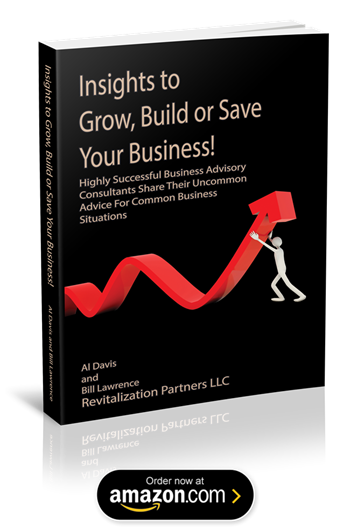 Despite an economic recovery that is well underway, many recovering businesses are still getting turned down for new business loans and loan renewals.
Despite an economic recovery that is well underway, many recovering businesses are still getting turned down for new business loans and loan renewals.
Despite the fact that the company shows signs of bouncing back from any recession based problems and management believing that their projections make a clear case for the future, often a regulated banking entity declines to make the loan.
Why doesn’t the bank see the situation the same way that management does? There are many factors that go into making that creditworthiness decision. We look at some of them here, beginning with the banking system.
Size Does Matter ...
 In the end, anyone who says size doesn’t matter is lying – at least when it comes to business lending.
In the end, anyone who says size doesn’t matter is lying – at least when it comes to business lending.
Size matters a lot and perhaps more than any other factor determines which bank will and won’t provide a credit facility. Borrowers that need loans between $2 million and $10 million are finding that they have the fewest choices and pay the most for their money.
All banks have legal lending limits that they cannot exceed when making loans. A bank legal lending limit is the maximum amount that any particular bank can lend to a single borrower or related group of borrowers.
Also, banking regulators want banks to spread their risk by having a diversified portfolio and don’t want them making a lot of loans at or near their legal lending limit. As a result, for most banks the effective in-house lending limit is considerably less than its legal lending limit.
As A General Rule …
As a general rule, borrowers that need loans with balances consistently larger than $2 million are too big for about 80% of the banks in the U.S. Surprisingly, only about 6% of the banks in the U.S. are larger than $1 billion in size and have the capital base to concentrate on middle- and lower-middle-market businesses.
 After a generation of bank consolidation, the U.S. banking industry has been hollowed out from the middle. While big banks deliver diversified, professional and cost-effective products and services, they just don’t do it for small – and lower-middle-market businesses.
After a generation of bank consolidation, the U.S. banking industry has been hollowed out from the middle. While big banks deliver diversified, professional and cost-effective products and services, they just don’t do it for small – and lower-middle-market businesses.
On the other hand, small banks lack balance sheet size, geographic reach, back office infrastructure and product mix to satisfy the needs of most middle- and lower-middle-market businesses.
Regulators that are rightfully concerned about future loan losses and credit quality are further restricting small bank credit in an effort to prevent today’s new loans from becoming tomorrow’s mistakes.
The Effect Of Dodd-Frank …
Bankers who say that the rules really changed after the 2008/2009 banking crisis are only partially correct. The rules for small business and lower-middle-market lending are essentially unchanged. What has been added is the effect of Dodd-Frank legislation on the regulators, recently causing them to play a greater role in enforcing their rules rather than trusting bank executives to self-regulate.
 As an example, the rules for providing business loans secured by accounts receivable and inventory have been around since March 2000. And, the rules concerning floor plan lending to retailers haven’t materially changed since May 1998. These rules are set forth in easy to understand and very detailed “how to” manuals published by the Office of the Comptroller of the Currency and can be easily found on the Internet.
As an example, the rules for providing business loans secured by accounts receivable and inventory have been around since March 2000. And, the rules concerning floor plan lending to retailers haven’t materially changed since May 1998. These rules are set forth in easy to understand and very detailed “how to” manuals published by the Office of the Comptroller of the Currency and can be easily found on the Internet.
Unfortunately, only a few banks under $1 billion in size comply with the lending rules, and as result only a few banks can participate in the collateral-dependent secured commercial loan market without being criticized by their regulator.
Banks Turning Backs On Community?
That doesn’t mean that banks that don’t make an effort to comply with the rules and therefore don’t lend are bad banks or are turning their back on the business community. The problem that small banks have is that it is expensive to comply with the lending rules. Unless banks are going to make a large number of accounts receivable and inventory-secured loans or inventory-dependent floor plan loans, it just doesn’t make economic sense to spend the money required to comply with the rules.
Small banks in all but the most densely populated and largest metropolitan markets can’t make money providing collateral-dependent loans and still comply with decades-old regulations. Since regulators are now enforcing these regulations, many small banks have pulled out of collateral-dependent business lending and business borrowers are finding that their financing options have been restricted.
 Many times when banks say no, it’s because they’ve looked at what the company is requesting in light of historical performance or its balance sheet, and we see that it really needs equity in addition to debt.
Many times when banks say no, it’s because they’ve looked at what the company is requesting in light of historical performance or its balance sheet, and we see that it really needs equity in addition to debt.
Obviously it’s more appealing for a business owner to pay a low percentage to the bank than to give away a portion of the company, but unfortunately, equity investments are the reality most entrepreneurs face once they’re past the bootstrap stage. Most companies can’t grow just with debt.
A Good Rule Of Thumb …
A good rule of thumb is that for every $1,000,000 in debt you’re seeking, you should have $300,000 in equity. If you are asking for a loan that will put your company at a debt-to-equity ratio of more than three or four to one, a bank will think you are over-leveraged.
 Banks look at an application like this: if we gave them that money today, could they make the payments based on their cash flow from last year? Companies often want a lender to make a loan based on their projections. If you can demonstrate why the profit is going to be greater and have a very convincing story built around facts, often a well put together projection will get a successful hearing.
Banks look at an application like this: if we gave them that money today, could they make the payments based on their cash flow from last year? Companies often want a lender to make a loan based on their projections. If you can demonstrate why the profit is going to be greater and have a very convincing story built around facts, often a well put together projection will get a successful hearing.
If you’re asking for a loan based on projections, nail down the proof. “The market’s great and we think we can grow 20 percent” probably is not going to be assurance enough for a bank.
The Curse Of QuickBooks…
 Part of this problem is the curse of QuickBooks. Many companies think that because someone on their team can use QuickBooks, they barely need an accountant, much less a CFO.
Part of this problem is the curse of QuickBooks. Many companies think that because someone on their team can use QuickBooks, they barely need an accountant, much less a CFO.
People who start businesses are usually smart, capable and talented, so they believe they can manage the loan process themselves. But you need to understand the correct data and ratios that the banks want to see before you can finalize a presentation to the bankers.
One of our major services at RP is assisting our clients to get new loans. And we see these problems constantly, not just with companies that have in the low millions or so in sales, but sometimes with companies that have tens of millions in sales.
 We’ll start analyzing their financials and see that something doesn’t make sense and something else doesn’t balance. We’ll see projections that don’t tie in with accounts receivable levels or current payables.
We’ll start analyzing their financials and see that something doesn’t make sense and something else doesn’t balance. We’ll see projections that don’t tie in with accounts receivable levels or current payables.
And that makes any lender looking at the data think the company has poor financial controls.
This is a problem you can fix (or ideally, prevent) by making sure that you have the talent that knows how to present your situation in the best light to the lender and that makes certain that your data and projections are accurate and tie together.


